
Discover the timeless craft of tanning hides to create highly practical and durable leather. Learn how to transform raw animal skins into beautiful and functional materials, from clothing to furniture. This guide will take you through the traditional methods of tanning hide at home using natural materials and simple tools. Prepare to embark on a captivating journey into preserving and transforming animal skins into quality leather.
Tools and Materials Needed
- Fresh Animal Hide
- Fleshing Beam or Fleshing Knife
- Wooden Frame or Stretcher
- Tanning Agent (bark or commercial agent)
- Salt
- Water
- Large Plastic Bucket or Container
- Softening Agent (neatsfoot oil)
- Non-iodized Salt
- Scraping Tool (blunt-edge object or knife)
- Sandpaper or Pumice Stone
- Protective Clothing or Work Gloves
Step 1 – Fleshing
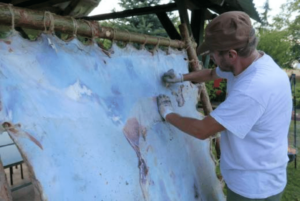
Remove any remaining flesh, fat, or membrane from the hide. Utilize a fleshing knife or a fleshing beam for this essential step. It’s crucial in preventing decay and ensuring the hide is tanned correctly.
Step 2 – Salting
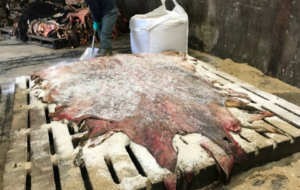
Preserve and dry the hide effectively by generously applying non-iodized salt on both sides. Let it rest for approximately 24 hours, then remove any excess salt and repeat the salting if needed.
Step 3 – Drying and Rehydration
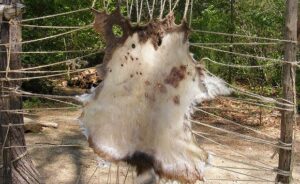
Properly dry and preserve your salted hide by hanging it in a dry, well-ventilated space. Give it enough time to dry fully, ranging from several days to a week, depending on the hide’s size. Then, rejuvenate the hide’s moisture by soaking it in clean water for 1-2 hours. Finally, remove the hide from the water and gently squeeze out any excess moisture.
Step 4 – Tanning
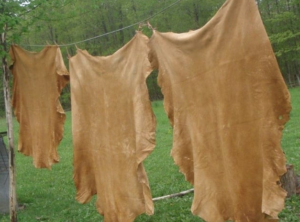
Get that perfect tan by using natural tanning agents or a commercial tanning product. Just follow the instructions provided and you’ll be ready to go. All you need to do is put the rehydrated hide into a big plastic container or bucket and pour the tanning solution over it until it’s completely covered. Please give it a gentle stir now and then and let it tan for as long as recommended.
Step 5 – Scraping and Stretching
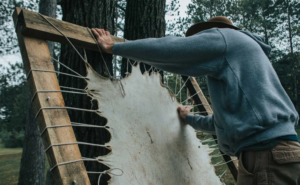
Prepare the hide for tanning by removing residual flesh or fat with a scraping tool. Rinse the hide with clean water and remove excess moisture. Securely stretch the hide over a wooden frame or stretcher to ensure a smooth drying process without wrinkles or shrinkage.
Step 6 – Drying and Softening

Dry the stretched hide in a cool, well-ventilated space, away from direct sunlight or excessive heat, to prevent harm. Once completely dry, delicately massage the hide with a pumice stone or sandpaper to achieve a softer texture and eliminate any remaining flaws.
Step 7 – Conditioning
Improve the feel and lifespan of your leather by applying a softening agent like neatsfoot oil or a commercial leather conditioner. Rub the agent into the leather using your hands or a soft cloth, ensuring the fibers evenly absorb it. This simple step will make your leather more flexible and durable.
Learn the art of tanning and unleash your creativity by transforming raw animal skins into useful and durable leather. This enriching process demands time, patience, and meticulousness, but the rewards are worth it. You can preserve hides and fashion them into practical and unique leather goods with dedication and practice. Tanning leather is an ancient craft. Use the step-by-step guide above and make our ancestors proud.


